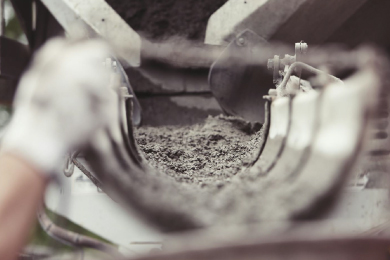With the continued drive to increase the sustainability and energy efficiency of our buildings, and the explosion of the Covid-19 pandemic, are our buildings designed to help or hamper human health? Simon Green, Managing Director of Green Building Design Consultants, discusses how we can ensure our buildings not only protect the environment but our health too.

With lockdown restrictions continuing to ease and the furlough scheme being phased out, many of us are slowly returning to the office and workplaces. Employers and landlords are working hard to ensure all workspaces are Covid-safe, but what part does the building itself play in the state of our health?
Leading research shows that there is a direct correlation between relative humidity levels inside a building and the impact on occupant’s health. In fact, data shows that a relative humidity level of 40-60% is optimal in protecting and maintaining our health. Yet after decades of sealing up buildings to reduce heating and cooling loads, we have inadvertently under-ventilated our buildings in a bid to increase energy efficiencies.
Advances in science, such as the geneoscope, have revolutionised our understanding of microbes and shown that there are trillions of microbes living inside buildings. As humans, every time we breathe, move and talk, we exhale droplets or shed cells throughout all areas of a building. In fact, the average person sheds approximately 37 million microbes per hour into the surrounding air and onto surfaces.
How a building is designed, in terms of materials and ventilation, will determine which of these microbes survive. And the recent Covid pandemic has brought the danger of airborne diseases firmly to the fore in all our minds.
So is it possible to manage our buildings to do both? That is, to support our health whilst also supporting our drive to lower energy and carbon emissions? In short, the answer is yes – but it is not without its challenges.
Certain steps can be taken to reduce risk, such as using natural materials for surfaces, which are often unfavourable to microbes and can often satisfy sustainability requirements at the same time. However, a major scientific study shows that relative humidity is by far the biggest factor in improving the health of people within a building.
The indoor relative humidity of 40-60% we mention above ensures our immune defences are performing as well as they can, supports the proper functioning of our organs and decreases the risk of us getting sick. If relative humidity is lower or higher, it significantly impairs our human immune defence systems – something that is more critical now than ever whilst in the midst of the Covid pandemic.
But how can we scale our buildings to support human health without increasing operational and energy costs and consumption, the latter of which in turn affects human health on a potentially far bigger scale by degrading the natural environment of our planet?
The answer is to look at what constitutes a good building. Low carbon, energy-efficient, sustainable, aesthetically pleasing and comfortable are all key qualities, but human health is another element that must be considered when designing, building and managing buildings. Particle levels, exposure to toxins, thermal comfort and humidity must also be managed so that our buildings are both energy-efficient and healthy.
There are some areas that tick both boxes – increased ventilation, filtration, access to sunlight and UV light eradication all support reaching the relative humidity levels whilst reducing energy usage at the same time. After all – healthier buildings mean healthier people.
True, there are some elements that will increase operational costs, but how to decide which is of greater importance – running costs or health costs? The more optimistic among us would argue that even increased costs to maintain the optimum humidity levels in a workplace pays for itself, as it improves employee health, which in turn reduces sick leave and absenteeism and boosts productivity.
Simon Green, Managing Director of Green Building Design, comments, “A fine balance is needed to achieve our environmental and health targets. It is clear that significant time and money would be saved if buildings were optimised for human health at the outset, but that is not always possible. But through the correct design and use of specialised equipment, such as HVac units, we work with clients to ensure optimum humidity is achieved within a building, regardless of age, so that it is both energy- and health-efficient.”
When you consider that the air we breathe indoors can be up to five times more toxic than the air we breathe outdoors, we all have a responsibility to create indoor environments that promote health rather than challenge it.
Simon concludes “Sustainability has to remain high on the agenda as we move towards a zero carbon future, but it could be argued that wellness now needs to become the new sustainability.”




.png)




